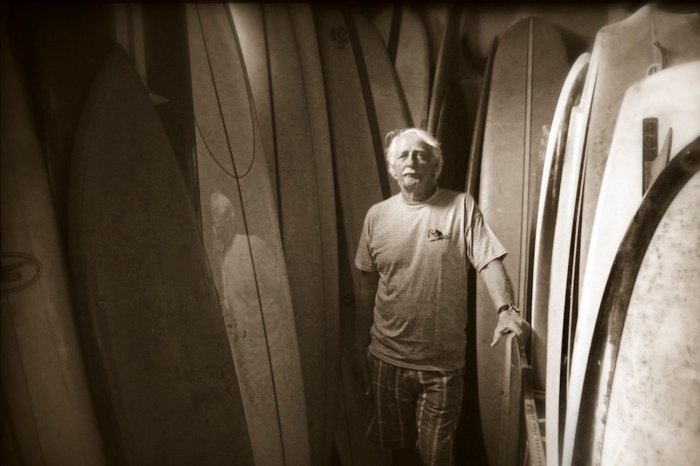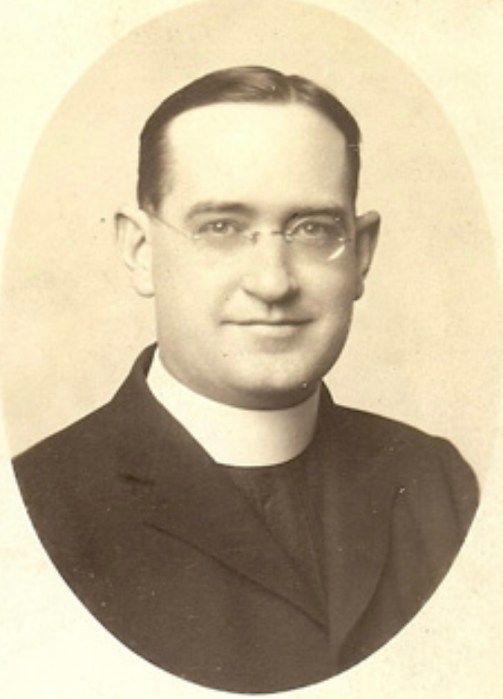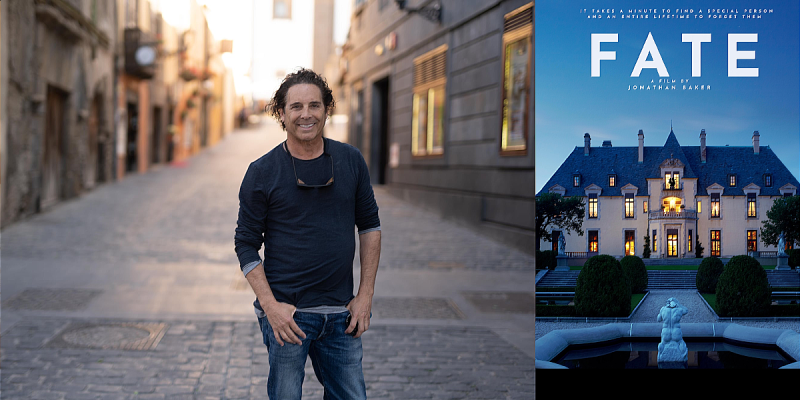By Thomas McGann It started with Prohibition. Thanks to the active political participation of the Woman’s Christian Temperance Union (WCTU), the Anti-Saloon League, and the likes of Carry A. Nation, an uncorseted woman (“bad for the vital organs” she claimed) who went about town with her handy hatchet chopping up taverns preaching “Death to Rum!”, in January 1919, the Eighteenth Amendment to the U.S. Constitution was ratified.This was quickly followed by the Volstead Act, which set forth enforcement measures. President Woodrow Wilson vetoed the bill, but both the Senate and the House of Representatives overrode his veto and Prohibition became the law of the land, outlawing the manufacture, transportation, importation, exportation, and sale of intoxicating liquors.The “drys,” as those supporting Prohibition were called, had greatly underestimated the public’s thirst for alcohol. Parched throats needed slaking, even presidents’. Both President Wilson and his successor, President Harding secreted their own personal liquor supplies in the White House and their personal residences.It did not take long for bootlegging to turn America into a nation of “honest lawbreakers.” The term “boot-legging,” it is suggested, originated during the Civil War when soldiers would sneak liquor into camp in their boots. Civilians quickly took up the practice, hiding flasks in boots or trouser legs. The term stuck and expanded to include “rumrunners,” smugglers waiting offshore with their illicit swag.With Prohibition, Fire Island awoke to a new reality. It lay close to New York City, the biggest market for this new, illegal contraband. With its long stretches of beaches, sparse population, ideal topography, and numerous inlets (in particular the relatively safe Fire Island Inlet), Fire Island became an ideal location for smugglers just as it had been for the pirates of yore.Depending on which history book you read, either Bill “The Real” McCoy or William “Big Bill” Dwyer came up with concept of Rum-Row, a flotilla of large vessels (mother ships) stationed three miles off-shore in international waters. They would sell their illegal spirits to smaller, faster boats for transport to trucks waiting to take the hooch to market.Charley Byron, a Fire Island original, recounted a story about taking his grandfather’s boat out the inlet to Rum-Row. He bought cases of liquor from an old Scottish rust bucket and took the booze directly to New York City, where the police had conveniently segregated an area for offloading contraband. An undertaker drove it away in his hearse.The Coast Guard soon instituted regular patrols in the Fire Island inlet to help curtail the smuggling. In response, those local fishermen, clam diggers, baymen, and small boat captains who had adopted this new lucrative trade needed alternative solutions. They would beach their boats through the surf and would then either bury the cases of liquor in the sand for later retrieval or haul them across the island to the Great South Bay for quick runs to Long Island’s south shore.The New York Times reported that Islip was the destination for large quantities of alcohol. Additionally, Suffolk County News reported that two vessels, the “Columbia” and the “Maud Muller” had dropped off cases of liquor in West Sayville on the very day that the police were (conveniently) out of town helping to quell a strike in Buffalo. An ice house for storing fish near the Zee Line ferry terminal in Bay Shore was converted to a store house for liquor. Soon trucks were transporting fish covered, ice dripping cases of booze into the city.The infamous hotel, the White House, in Water Island, once the destination for the socially elite (including President Teddy Roosevelt it has been rumored), had fallen on hard times after the First World War. Prohibition gave it new life and it returned to its glory days as a speakeasy and gambling casino. Even sleepy Saltaire had its “casino,” which openly served liquor.One self-confessed bootlegger specified Long Cove, Lonelyville and Ocean Beach as the primary destinations for the majority of the illegal liquor. Some of the more renowned speakeasies included the Canoe Place Inn (CPI), aka Tammany Hall East, because of all the corrupt politicians who hung out there, and Claudio’s of Greenport, which still has a trap door behind the bar for access to illicit spirits floated in beneath the building. Motor Parkway, originally built by William Vanderbilt as his own private raceway, found itself with nightly automobile races between the bootleggers and the police, a forerunner of what was to happen with moonshiners down south.And so the game proceeded. In 1924, Congress extended U.S. territorial waters out to 12 miles offshore hoping to increase the difficulty for smuggling. Undeterred, the smugglers built bigger and faster vessels.Though the original armada of boats transporting the alcohol had been a ragtag fleet of sailboats, fishing boats, and recreational watercraft, with so much money involved bootleggers were soon building sleek speedboats, some equipped with 400hp Liberty V-12 liquid-cooled aircraft engines. Even the newest Coast Guard vessels could not catch them.Several Fire Island ferry boats enjoyed exciting lives as rumrunners before retiring to more sedate occupations. Just about all old-salt captains from the various Fire Island ferry lines claimed to have been rumrunners during Prohibition. The ferry “Running Wild” and many other boats plying the bay in the ‘50s and ‘60s had been ferrying illegal booze before they began ferrying passengers. The “Running Wild” still had patched-over 50 caliber machine gun bullet holes in its hull when it was sold to a gentleman from Sayville.The “Artemis” (later renamed the “South Bay Courier”) was another. It was engaged in a gun battle with the Coast Guard after delivering booze to Claudio’s. Snyd Zegel had the “Artemis” and her sister ship the “Margaret” (both built by the Wheeler Shipyard in Coney Island) outfitted with three Hall-Scott Invader engines. According to one story, Snyd had just loaded a hull-full of illegal booze when the Coast Guard ran up on him. He raced them all the way from the Fire Island Inlet to Montauk and was never caught. He was later informed that the “Artemis” had been clocked at 42 knots.The most successful tactic employed by the bootleggers however was bribery. Less than a year after Prohibition began, 100 New York City agents were fired for taking bribes. Corruption was rampant from the federal level down to town officials, down to the local police. Even the Coast Guard was not immune. When the sloop “J.H.B.” ran aground off Point O’ Woods, the Coast Guard pulled the boat off the sandbar only to discover it contained $75,000 of illegal liquor. The boat’s captain was taken ashore by authorities to make a phone call and inexplicably “escaped.”Back then a Coast Guard seaman earned just $30 a week. A single run out to Rum-Row, a half day’s excursion, was worth $400 (more than three months salary) making honesty a questionable virtue. When the chief of the Fire Island Coast Guard station was away, his second-in-command called the authorities to inform them of the rampant bribery. He was threatened with arrest along with the guilty. He decided to remain silent.With so much money in play, it did not take long for the Mafia to insert itself. Al Capone, 19 at the time, earned his reputation running rum in Amityville. When he relocated to Chicago, Dutch Schultz, headquartered in Patchogue, took control of all area rum-running operations. In 1932, The New York Evening Journal reported that organized crime paid $1 million in bribes to the Coast Guard to insure the safe delivery of their contraband. Honest surfmen were known to have been beaten or shot.But the mood in the country was changing. The public became disenchanted with the results of Prohibition. The corruption was obvious. Crime was increasing. When bootleggers were caught red-handed some juries would fail to convict. Smuggling had become so efficient that the price of a case of liquor dropped from $6 a case to $2, severely limiting profits. The advent of quality moonshine aggravated the situation.Finally, on Dec. 5, 1933, the Twenty-first Amendment to the Constitution was ratified and 13 years of Prohibition came to an end. While most of America celebrated, some clandestine operations failed, the White House Hotel at Water Island being one, but those 13 years provided ripe tales for Fire Islanders to recount (and, perhaps, embellish) to this day. Cheers!
It started with Prohibition. Thanks to the active political participation of the Woman’s Christian Temperance Union (WCTU), the Anti-Saloon League, and the likes of Carry A. Nation, an uncorseted woman (“bad for the vital organs” she claimed) who went about town with her handy hatchet chopping up taverns preaching “Death to Rum!”, in January 1919, the Eighteenth Amendment to the U.S. Constitution was ratified.This was quickly followed by the Volstead Act, which set forth enforcement measures. President Woodrow Wilson vetoed the bill, but both the Senate and the House of Representatives overrode his veto and Prohibition became the law of the land, outlawing the manufacture, transportation, importation, exportation, and sale of intoxicating liquors.The “drys,” as those supporting Prohibition were called, had greatly underestimated the public’s thirst for alcohol. Parched throats needed slaking, even presidents’. Both President Wilson and his successor, President Harding secreted their own personal liquor supplies in the White House and their personal residences.It did not take long for bootlegging to turn America into a nation of “honest lawbreakers.” The term “boot-legging,” it is suggested, originated during the Civil War when soldiers would sneak liquor into camp in their boots. Civilians quickly took up the practice, hiding flasks in boots or trouser legs. The term stuck and expanded to include “rumrunners,” smugglers waiting offshore with their illicit swag.With Prohibition, Fire Island awoke to a new reality. It lay close to New York City, the biggest market for this new, illegal contraband. With its long stretches of beaches, sparse population, ideal topography, and numerous inlets (in particular the relatively safe Fire Island Inlet), Fire Island became an ideal location for smugglers just as it had been for the pirates of yore.Depending on which history book you read, either Bill “The Real” McCoy or William “Big Bill” Dwyer came up with concept of Rum-Row, a flotilla of large vessels (mother ships) stationed three miles off-shore in international waters. They would sell their illegal spirits to smaller, faster boats for transport to trucks waiting to take the hooch to market.Charley Byron, a Fire Island original, recounted a story about taking his grandfather’s boat out the inlet to Rum-Row. He bought cases of liquor from an old Scottish rust bucket and took the booze directly to New York City, where the police had conveniently segregated an area for offloading contraband. An undertaker drove it away in his hearse.The Coast Guard soon instituted regular patrols in the Fire Island inlet to help curtail the smuggling. In response, those local fishermen, clam diggers, baymen, and small boat captains who had adopted this new lucrative trade needed alternative solutions. They would beach their boats through the surf and would then either bury the cases of liquor in the sand for later retrieval or haul them across the island to the Great South Bay for quick runs to Long Island’s south shore.The New York Times reported that Islip was the destination for large quantities of alcohol. Additionally, Suffolk County News reported that two vessels, the “Columbia” and the “Maud Muller” had dropped off cases of liquor in West Sayville on the very day that the police were (conveniently) out of town helping to quell a strike in Buffalo. An ice house for storing fish near the Zee Line ferry terminal in Bay Shore was converted to a store house for liquor. Soon trucks were transporting fish covered, ice dripping cases of booze into the city.The infamous hotel, the White House, in Water Island, once the destination for the socially elite (including President Teddy Roosevelt it has been rumored), had fallen on hard times after the First World War. Prohibition gave it new life and it returned to its glory days as a speakeasy and gambling casino. Even sleepy Saltaire had its “casino,” which openly served liquor.One self-confessed bootlegger specified Long Cove, Lonelyville and Ocean Beach as the primary destinations for the majority of the illegal liquor. Some of the more renowned speakeasies included the Canoe Place Inn (CPI), aka Tammany Hall East, because of all the corrupt politicians who hung out there, and Claudio’s of Greenport, which still has a trap door behind the bar for access to illicit spirits floated in beneath the building. Motor Parkway, originally built by William Vanderbilt as his own private raceway, found itself with nightly automobile races between the bootleggers and the police, a forerunner of what was to happen with moonshiners down south.And so the game proceeded. In 1924, Congress extended U.S. territorial waters out to 12 miles offshore hoping to increase the difficulty for smuggling. Undeterred, the smugglers built bigger and faster vessels.Though the original armada of boats transporting the alcohol had been a ragtag fleet of sailboats, fishing boats, and recreational watercraft, with so much money involved bootleggers were soon building sleek speedboats, some equipped with 400hp Liberty V-12 liquid-cooled aircraft engines. Even the newest Coast Guard vessels could not catch them.Several Fire Island ferry boats enjoyed exciting lives as rumrunners before retiring to more sedate occupations. Just about all old-salt captains from the various Fire Island ferry lines claimed to have been rumrunners during Prohibition. The ferry “Running Wild” and many other boats plying the bay in the ‘50s and ‘60s had been ferrying illegal booze before they began ferrying passengers. The “Running Wild” still had patched-over 50 caliber machine gun bullet holes in its hull when it was sold to a gentleman from Sayville.The “Artemis” (later renamed the “South Bay Courier”) was another. It was engaged in a gun battle with the Coast Guard after delivering booze to Claudio’s. Snyd Zegel had the “Artemis” and her sister ship the “Margaret” (both built by the Wheeler Shipyard in Coney Island) outfitted with three Hall-Scott Invader engines. According to one story, Snyd had just loaded a hull-full of illegal booze when the Coast Guard ran up on him. He raced them all the way from the Fire Island Inlet to Montauk and was never caught. He was later informed that the “Artemis” had been clocked at 42 knots.The most successful tactic employed by the bootleggers however was bribery. Less than a year after Prohibition began, 100 New York City agents were fired for taking bribes. Corruption was rampant from the federal level down to town officials, down to the local police. Even the Coast Guard was not immune. When the sloop “J.H.B.” ran aground off Point O’ Woods, the Coast Guard pulled the boat off the sandbar only to discover it contained $75,000 of illegal liquor. The boat’s captain was taken ashore by authorities to make a phone call and inexplicably “escaped.”Back then a Coast Guard seaman earned just $30 a week. A single run out to Rum-Row, a half day’s excursion, was worth $400 (more than three months salary) making honesty a questionable virtue. When the chief of the Fire Island Coast Guard station was away, his second-in-command called the authorities to inform them of the rampant bribery. He was threatened with arrest along with the guilty. He decided to remain silent.With so much money in play, it did not take long for the Mafia to insert itself. Al Capone, 19 at the time, earned his reputation running rum in Amityville. When he relocated to Chicago, Dutch Schultz, headquartered in Patchogue, took control of all area rum-running operations. In 1932, The New York Evening Journal reported that organized crime paid $1 million in bribes to the Coast Guard to insure the safe delivery of their contraband. Honest surfmen were known to have been beaten or shot.But the mood in the country was changing. The public became disenchanted with the results of Prohibition. The corruption was obvious. Crime was increasing. When bootleggers were caught red-handed some juries would fail to convict. Smuggling had become so efficient that the price of a case of liquor dropped from $6 a case to $2, severely limiting profits. The advent of quality moonshine aggravated the situation.Finally, on Dec. 5, 1933, the Twenty-first Amendment to the Constitution was ratified and 13 years of Prohibition came to an end. While most of America celebrated, some clandestine operations failed, the White House Hotel at Water Island being one, but those 13 years provided ripe tales for Fire Islanders to recount (and, perhaps, embellish) to this day. Cheers!































